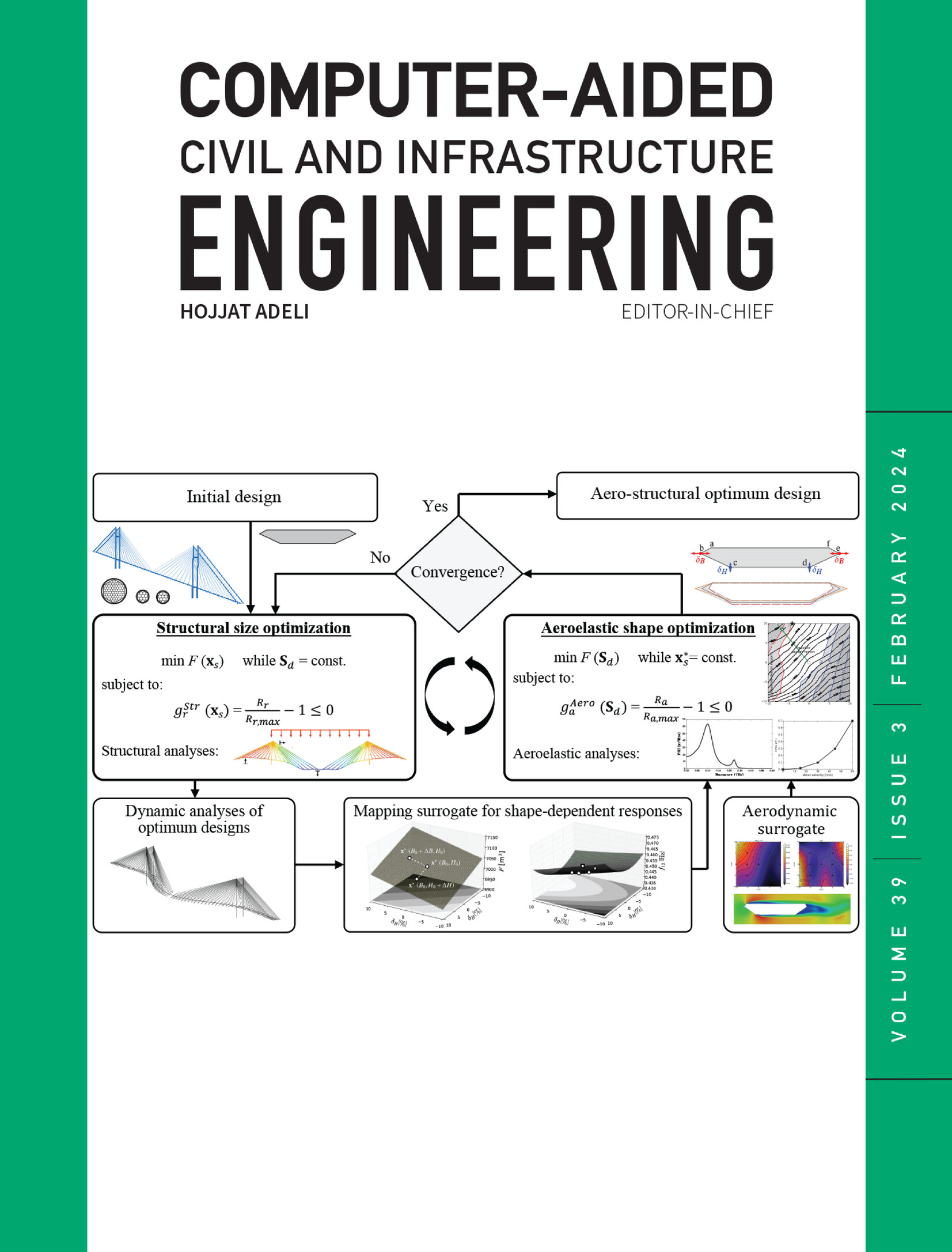多路口信号控制优化的误差分布核增强神经网络学习方法
IF 8.5
1区 工程技术
Q1 COMPUTER SCIENCE, INTERDISCIPLINARY APPLICATIONS
引用次数: 0
摘要
交通拥堵极大地导致了流动性和能源效率低下。在基于人工智能(AI)模型的交通信号控制和管理中,发现了许多研究挑战。例如,开发人工智能驱动的动态交通系统模型以准确捕获高分辨率交通属性并制定交通信号优化的鲁棒控制算法是困难的。此外,交通系统建模和控制过程中的不确定性使交通信号系统的可控性进一步复杂化。为了部分解决这些挑战,本研究提出了一种新的混合神经网络模型,该模型采用概率密度函数核整形技术增强,以更好地制定交通系统动力学,提高综合交通网络建模和控制。数值实验结果表明,所提控制方法优于基准控制策略,总体平均时延平均降低11.64%。通过利用这一创新模型的能力,本研究旨在解决与交通拥堵和能源效率低下相关的主要挑战,以实现更有效和适应性更强的基于人工智能的交通控制系统。本文章由计算机程序翻译,如有差异,请以英文原文为准。
Learning error distribution kernel‐enhanced neural network methodology for multi‐intersection signal control optimization
Traffic congestion has substantially induced significant mobility and energy inefficiency. Many research challenges are identified in traffic signal control and management associated with artificial intelligence (AI)‐based models. For example, developing AI‐driven dynamic traffic system models that accurately capture high‐resolution traffic attributes and formulate robust control algorithms for traffic signal optimization is difficult. Additionally, uncertainties in traffic system modeling and control processes can further complicate traffic signal system controllability. To partially address these challenges, this study presents a novel, hybrid neural network model enhanced with a probability density function kernel shaping technique to formulate traffic system dynamics better and improve comprehensive traffic network modeling and control. The numerical experimental tests were conducted, and the results demonstrate that the proposed control approach outperforms the baseline control strategies and reduces overall average delays by 11.64% on average. By leveraging the capabilities of this innovative model, this study aims to address major challenges related to traffic congestion and energy inefficiency toward more effective and adaptable AI‐based traffic control systems.
求助全文
通过发布文献求助,成功后即可免费获取论文全文。
去求助
来源期刊
CiteScore
17.60
自引率
19.80%
发文量
146
审稿时长
1 months
期刊介绍:
Computer-Aided Civil and Infrastructure Engineering stands as a scholarly, peer-reviewed archival journal, serving as a vital link between advancements in computer technology and civil and infrastructure engineering. The journal serves as a distinctive platform for the publication of original articles, spotlighting novel computational techniques and inventive applications of computers. Specifically, it concentrates on recent progress in computer and information technologies, fostering the development and application of emerging computing paradigms.
Encompassing a broad scope, the journal addresses bridge, construction, environmental, highway, geotechnical, structural, transportation, and water resources engineering. It extends its reach to the management of infrastructure systems, covering domains such as highways, bridges, pavements, airports, and utilities. The journal delves into areas like artificial intelligence, cognitive modeling, concurrent engineering, database management, distributed computing, evolutionary computing, fuzzy logic, genetic algorithms, geometric modeling, internet-based technologies, knowledge discovery and engineering, machine learning, mobile computing, multimedia technologies, networking, neural network computing, optimization and search, parallel processing, robotics, smart structures, software engineering, virtual reality, and visualization techniques.

 求助内容:
求助内容: 应助结果提醒方式:
应助结果提醒方式:


